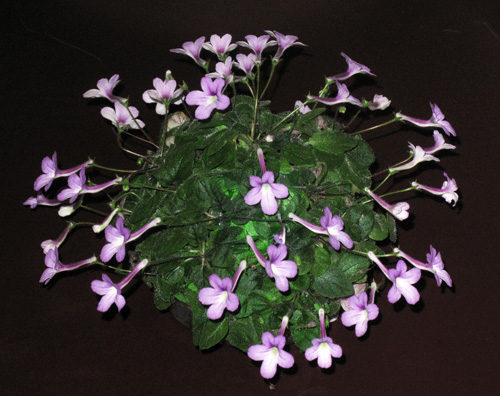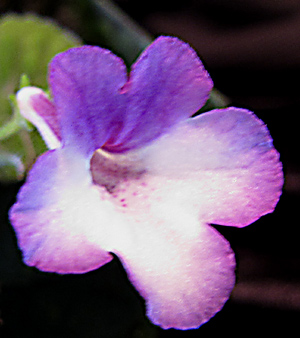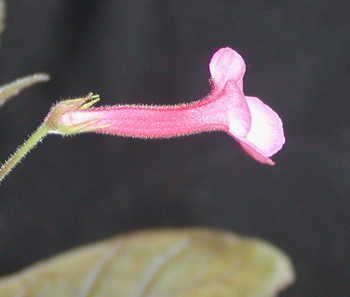|
Sinningia 'Cindy' (by Tom Talpey, 1965) is
S. concinna x eumorpha.
Because it is a cross between two different clades,
Sinningia 'Cindy' is sterile, but
Sinningia 'Cindy-ella' is apparently a fertile
tetraploid form.
Sinningia 'Cupid's Doll' (by Ruth Katzenberger, 1966) is
S. 'Ramadeva' x 'Dollbaby'.
Both parents are probably tetraploid
S. pusilla hybrids.
Sinningia 'Dollbaby' (by Ruth Katzenberger, 1963) is
S. pusilla x eumorpha.
Because it is a cross between two different clades, S. 'Dollbaby' is
sterile, but there is apparently a tetraploid form which is fertile.
(That's according to the AGGS Sinningia register, but it may be that
the plant distributed under the 'Dollbaby' name is the tetraploid.)
External link: GRW
picture.
Sinningia 'Freckles' (by Carl Clayberg, 1966) is
S. hirsuta x concinna.
Because it is a cross between two different clades,
S. 'Freckles' is sterile, but
S. 'Hircon' is apparently a fertile tetraploid form.
External link: GRW
picture.
Sinningia 'Krishna' (by Frances Batcheller, registered 1973) is
S. 'Ramadeva' "line bred"
(according to the Gesneriad Hybrids Register).
Presumably this means that S. 'Krishna' is the result of selfing
S. 'Ramadeva'.
Sinningia 'Oengus' (by Frances Batcheller, registered 1973) is
S. (concinna x schiffneri) x 'Krishna'.
Thus this hybrid has both
S. concinna and
S. pusilla in its background.
As usual, however, I must be skeptical about its ancestry.
S. concinna x schiffneri would have to be sterile.
The two species are so far apart, I would be surprised if even the standard appeal to
tetraploidy would work here.
I have never seen either S. 'Oengus' or its putative
ancestor S. concinna x schiffneri.
Sinningia 'Pink Petite' is
S. pusilla x leucotricha, registered by Carl Clayberg in 1965.
See also S. 'Ramadeva'.
Sinningia 'Quasar' is
S. pusilla x conspicua, registered by Al Wojcik in 1993.
I presume it does not have a supermassive black hole at its center, but I have not seen it,
so I cannot be sure.
Sinningia 'Ramadeva'
(by Frances Batcheller, registered 1973) is
S. pusilla x leucotricha.
See also S. 'Pink Petite'.
Because this cross spans two different clades, the outcome should be sterile.
However, the Gesneriad register shows several crosses with
S. 'Ramadeva' as parent, so
it is likely that this one is a fertile
tetraploid form.
For instance, S. 'Benten'
was registered by Frances Batcheller in 1973, as
S. 'Ramadeva' x barbata, and
S. 'Kore' as
S. 'Ramadeva' x richii.
I have to say, hybridizers were tougher in those days.
You get a fertile tetraploid hybrid of
S. leucotricha and
S. pusilla, and right away you cross it with
S. richii and
S. barbata?
No wimpy S. eumorpha or
S. cardinalis crosses for Mrs. Batcheller, no sir.
|


